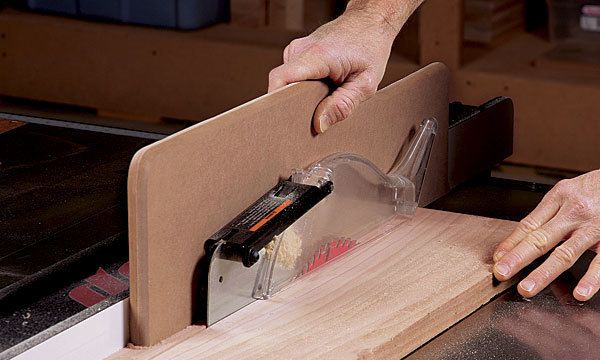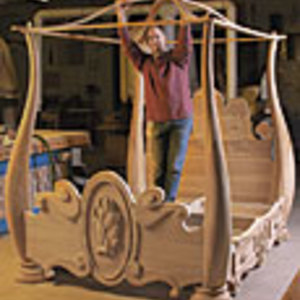Staying Safe on the Table Saw
Marc Adams shares his tips for safe ripping and crosscutting, including jigs to beef up your miter gauge, a good crosscut sled, and a zero-clearance insert.

Synopsis: Hundreds of students pass through Marc Adams’ woodworking school each year, so he needs rock-solid safety practices for everyone who comes in, regardless of skill level. Table saw safety is essential, and here he shares his core principles for staying safe and avoiding kickback: Maintain control, use a splitter to avoid kickback, and limit your exposure to the blade with essential gear such as push sticks, pads, and the blade cover. Included are tips for safe ripping and crosscutting, including jigs to beef up your miter gauge, a good crosscut sled, and a zero-clearance insert.
Most woodworkers, including me, will answer yes to the following two questions, while looking sheepishly at their penny loafers. Did you ignore the “Using Your Saw” section in the owner’s manual when you got your first table saw? Have you experienced kickback?
I have had workpieces kick back a few times in my…
Start your 14-day FREE trial to continue reading this story.
Plus, access more than 1,900 in-depth articles and more when you become a member.
Start Your Free Trial NowAlready a member? Log In








Comments
One thing I don't see mentioned is when cutting bevels, never cut under the blade. I've been using a table saw almost daily for about 25 years and never read or heard that this is dangerous. Last year I learned about this after I lost the last section of my middle finger on my dominant hand.
I’ve added a picture of how I approached this operation. I used a scrap of plywood to support and fix in position the pieces I wanted to bevel. The plywood runs along the fence and the accident happened on the last piece I had to bevel. I had done this type of cut hundreds of times without incident, so I never thought I was doing anything dangerous. I placed my hand just slightly left of center on the plywood to make sure the item stayed down when I pushed it through. You can see on the second picture the blade caught the plywood and pulled the board and my hand into the blade.
After it was all said and done I posted about my accident on a woodworking forum and had others tell me I should never have used this method. They told me the safe way to do this was to attach a cleat to the bottom of the plywood and don't use the fence. Or I should move my fence to the other side of the blade and cut on top of the blade.
This is very important information that could have prevented my accident. It happened so fast I didn’t even know what happened until I got back from the hospital and saw the damage to the plywood. I’ve included a couple of pictures to show how I thought I was doing this procedure as safely as possible.
I think this info should be included in the article called “Staying Safe on the Tablesaw“. I just became a member, so it wouldn’t have helped me anyway, but it can help others to learn from my mistake.
Log in or become a member to post a comment.
Sign up Log in